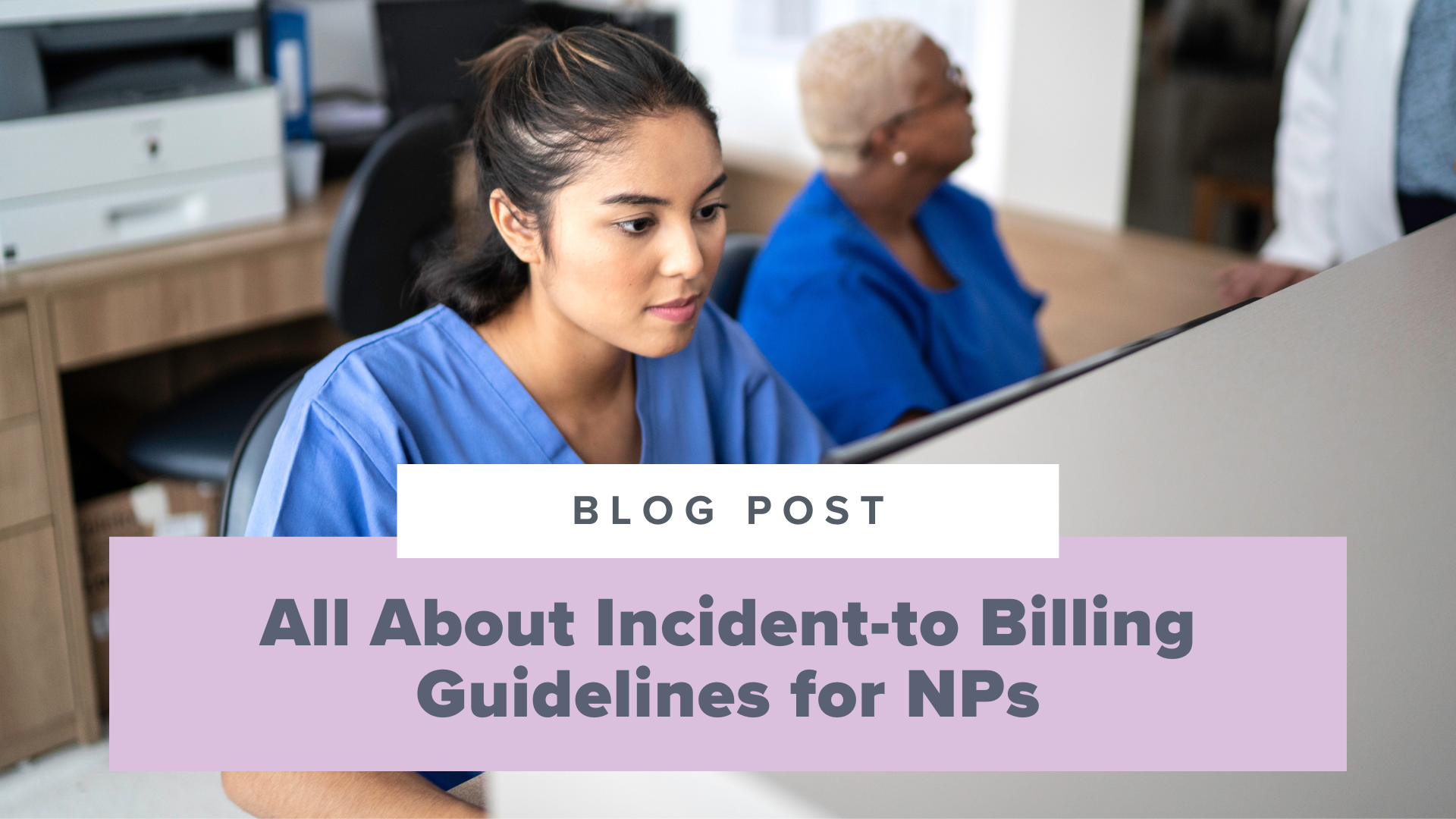All About Incident To Billing Guidelines for Nurse Practitioners
- by
- Jun 19, 2024
- Articles

Billing and coding is essential to getting paid for the care you provide, but it can also be a confusing and tedious process—especially for new nurse practitioners (NPs)!
In particular, there’s a special code that can be used to increase reimbursement rates for advanced practitioners like NPs and PAs: incident to billing.
But, there are some important rules you need to know first. In this post, we’ll help you understand the basics of incident to billing guidelines for nurse practitioners and help take the guesswork out of using it in your practice.
 Approaching your NP board exam? We can help with that! Explore your options for board review courses, specialty Qbanks, and more with SMNP Reviews—join the fun today!
Approaching your NP board exam? We can help with that! Explore your options for board review courses, specialty Qbanks, and more with SMNP Reviews—join the fun today!
What is incident to billing?
So, what exactly is incident to billing and how does it help with billing and reimbursement? Incident to billing is when the billing occurs under the supervising physician’s NPI number, allowing for 100% reimbursement.
For context, the Centers for Medicare and Medicaid Services (CMS) will reimburse physicians for 100% of the fee schedule for their services billed to Medicare.
But do you know what the reimbursement rate for non-physician clinicians is? (That would include nurse practitioners, certified nurse midwives, clinical nurse specialists, and physician assistants.) These non-physician clinicians are reimbursed at 85% of the fee schedule.
Just to emphasize again, the incident to billing guidelines only apply to Medicare reimbursement. Some private insurance companies may allow for incident to billing, but they can have their own guidelines. When in doubt, check with your clinic’s billing and coding specialist.
What are the incident to billing guidelines for nurse practitioners?
There are very specific requirements that must be met to be able to submit for “incident to” billing:
1. The service must be completed in a non-institutionalized setting, or someplace other than a hospital or skilled nursing facility.
There are exceptions to this with certain services started in the hospital or with a partial hospitalization, but you should consult with a billing and coding specialist.
2. The patient must have been first evaluated for the concern by the supervising physician.
Incident to billing is used in the follow-up care of patients, but the patient must have been first evaluated for the condition by a physician who has outlined the plan of care.
Also, if there is a need to change the plan of care, or if the non-physician clinician adds a new diagnosis, then that visit no longer qualifies for incident to billing.
3. Throughout the course of care, the supervising physician needs to actively participate in the patient’s care.
This is determined by state licensure requirements, but an example would be that the physician must see the patient for every third visit. This ensures that the physician maintains their role in the care of the patient.
4. The physician must be physically present in the office building at the same time the non-physician clinician is conducting the visit.
This doesn’t mean that the physician has to be in the same room and directly supervise the other clinician, but being in the building allows for immediate assistance if needed.
5. The non-physician clinician and the supervising physician are employed by the same entity, or company.
Also, any physician of that group can be physically present in the building. So, with rule #4, it does not have to be the same physician that saw the patient for the first visit.
As long as a physician from the same group is physically present while the non-physician clinician provides follow-up care, then rules #4 and 5 are met.
6. The care provided for the diagnosis is suitable to the office setting and is within the standard of care.
This means that the non-physician clinician needs to be qualified to continue with the plan of care. If additional visits or care are needed that are outside of the scope of practice of the non-physician clinician, then that does not qualify for incident to billing.
What are some examples of incident to billing for nurse practitioners?
Alright, we’ve got a few scenarios here. Which one qualifies for “incident to” billing?
Scenario #1: The nurse practitioner is seeing a patient for a new concern while the supervising physician is in the office suite.
Scenario #2: The nurse practitioner conducts a follow-up appointment for a patient with hyperlipidemia. The supervising physician established care at the last visit, but is currently out of the office today at a conference, and no other group physician is available.
Scenario #3: The nurse practitioner is providing follow-up care for a patient with diabetes. They follow the outlined plan of care, and then the NP adjusts medications and educates the patient accordingly. The supervising physician is in the office suite.
Scenario #4: The nurse practitioner is providing follow-up care for a patient with hypertension. They are following the outlined plan of care, and then the patient reports a new, unrelated concern. The NP orders labs and testing. The supervising physician is in the office suite.
Which scenario qualifies for “incident to” billing?
Scenario #3! Here, the NP was seeing a patient for whom the supervising physician already established care and a management plan. It’s ok that medication was adjusted during the visit, since it still pertains to the original diagnosis and management plan outlined by the physician. Plus, the physician was physically available in the building.
As for the other choices: in Scenario #1, the NP was establishing a plan of care for a new concern; in Scenario #2, the physician was not present in the office building; and in Scenario #4, since the NP was working up a new concern during that same visit, then “incident to” can no longer be used.
Final Thoughts
Billing and coding guidelines for nurse practitioners can seem really intimidating for new clinicians, and there can be a lot of rules to remember! Once you learn the basics, it becomes much easier to learn more specific opportunities like incident to billing. Be sure to reach out to the billing and coding specialist in your office or clinical practice for the most up to date guidance!
Looking for more (free!) NP content? Check out these other posts and podcasts at SMNP Reviews!
Search the Blog
Prepping for Primary Care NP Boards?
Join our Primary Care Live Study Group or check out the Self-Paced Courses & Qbank options!
Learn MoreExplore Specialty NP Qbanks & Mock Exams
Practice with board-style questions for your AGACNP, PMHNP, ENP, WHNP, or PNP exams.
Get StartedJoin our Facebook Group!
Get FREE support and encouragement from thousands of FNP/AGPCNP students and our NP support team.
Join the CommunitySign Up for Free Live Classes
Join us for FREE monthly live study sessions covering topics such as antibiotics, diabetes, musculoskeletal conditions, depression & anxiety, and more!
Grab a Spot


